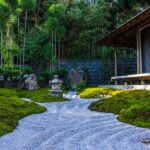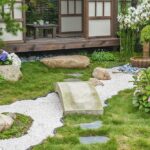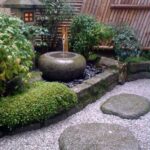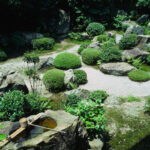Japanese garden design is a centuries-old art form that has captivated people around the world with its simple yet elegant beauty. Rooted in the principles of Zen Buddhism, these gardens are carefully crafted to evoke a sense of harmony, tranquility, and serenity. The design of a Japanese garden is meant to create a peaceful retreat from the chaos of everyday life and offer a place for meditation and reflection.
One of the key elements of Japanese garden design is the use of natural materials such as stone, gravel, and wood. These materials are carefully chosen and arranged to create a sense of balance and harmony within the space. Rocks are often used to represent mountains or islands, while gravel is raked to symbolize water or waves. Wooden structures such as bridges, gates, and lanterns add a touch of traditional Japanese architecture to the garden.
Another important aspect of Japanese garden design is the concept of “borrowed scenery,” or shakkei in Japanese. This technique involves incorporating elements of the surrounding landscape into the garden design, such as distant mountains or trees. By incorporating these elements into the design, the garden becomes a seamless extension of the natural world, creating a sense of unity and tranquility.
Water is also a key element in Japanese garden design, as it symbolizes purity, life, and renewal. Ponds, streams, and waterfalls are often incorporated into the design to create a sense of movement and flow within the garden. Water features also serve as a focal point for meditation and contemplation, as the sound of flowing water can help calm the mind and soothe the spirit.
Plants play a crucial role in Japanese garden design, with a focus on simplicity, balance, and symbolism. Traditional Japanese gardens often feature a limited palette of plants, including moss, bamboo, pine trees, and cherry blossoms. Each plant is carefully selected and placed to create a harmonious composition that reflects the changing seasons and the passage of time.
Overall, Japanese garden design is a reflection of the country’s deep connection to nature and its reverence for simplicity and beauty. By incorporating natural materials, borrowed scenery, water features, and carefully chosen plants, Japanese gardens create a tranquil and harmonious space that offers a sense of peace and serenity to all who enter. Whether large or small, traditional or modern, Japanese gardens continue to inspire and captivate people around the world with their timeless beauty and spiritual significance.
















